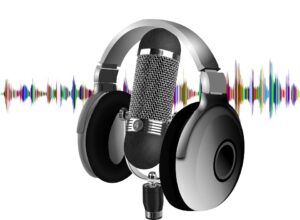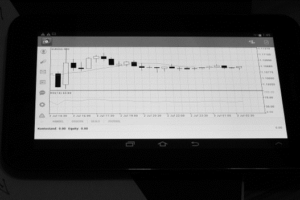
When it comes to business marketing channels, most people know about social media, print advertising, and PPC ads. However, one of the best ways to find and cultivate new leads is inbound marketing, but also by keeping a good control of your business processes, and you can solvent this with a with a consultancy in payroll administration services. If you’re unfamiliar with the term, inbound marketing refers to content generation to attract new customers. While blogs are the most common form of inbound content, podcasts are another excellent resource.
In 2022, there are over 2 million podcasts on sites like Spotify and Itunes, and these shows focus on a wide range of topics. Best of all, podcasts can not only attract new customers but can also drive sales. On average, advertisements on business-related podcasts generate a 14-percent increase in purchase intent. Plus, about a third (32 percent) of marketers say that podcast ads are effective and valuable.
But, how can you start a podcast for your business? Here are seven steps to go from idea to reality.
How to Start a Business Podcast
With so many podcasts out there, it can feel overwhelming to launch a new channel for your brand. However, with the proper planning and execution, you can see some incredible results from your hard work. Also, remember that you can sync your podcast to your other marketing strategies you can learn form experts like Damon Burton. For example, you can promote your podcast on your website and social profiles, and vice versa. Here’s how to get started.
Step One: Choose Your Niche
As with any marketing technique, it’s best to target specific people within a demographic. For example, let’s say you sell party supplies. Instead of targeting women ages 25 to 45, you should focus on middle-aged women looking to plan parties for their workplace or women who want to plan birthday parties for their children under 10.
Once you have your customer personas fleshed out, you can determine the niche for your podcast. Suppose you’re hoping to capture the attention of women planning birthday parties. In that case, you can talk about hot new toy trends, offer fun and festive decoration ideas, or how to plan daytime activities for children.
Overall, you want to get into the mindset of your target audience and speak to their interests and needs. Also, ask yourself what problems your ideal customer faces and how your products can help. Maybe someone needs last-minute party supplies, or they’re looking to host a large gathering on a tight budget. You want to bring your audience in with related content and then sell your products to solve their specific problem.
Step Two: Write a Podcast Description
Your podcast description needs to appeal to two entities. First, you want your description to offer insight into your podcast content and make it sound appealing enough for someone to listen. Second, you have to use the right keywords and tags so that new listeners can discover your podcast both on search engines and through the host site. Here are some tips on how to write a compelling podcast description:
- Keep it Short – While you may be able to write up to 500 words or so, you should aim for much less than that (i.e., 100 or 150). Realistically, new users will get turned off by a wall of text, so you want to make it concise and scannable.
- Appeal to Your Audience’s Needs – Ask your listeners a question about a specific problem they’re having (i.e., want to make your child’s birthday extra special?) and then discuss how your podcast provides insight to solve that problem.
- Explain the Format – Is the podcast just one person talking for 20 minutes, or will there be multiple hosts? Will you have guest speakers, and how will they relate to the content? For example, if you’re trying to be authoritative, you want to talk to experts. If you’re trying to be more informal, guests can share personal experiences and insights.
Step Three: Prepare Your Podcast Artwork and Branding
While your description is valuable, it’s not what will get your channel noticed. Instead, you must have a compelling logo and artwork to appeal to new listeners. Also, even though you’re hosting a branded podcast, it’s best to have a unique logo for it. Not only will a new logo help you with your marketing materials, but it can also make your content more authentic.
If you need some inspiration, you can check out podcast logo examples before you start designing. Also, you need to make sure it fits your niche and podcast description. For example, if you’re talking about birthday parties, a cake or balloon graphic fits well.
In addition to your logo, you should also make a header image and other artwork to make your profile shine. As a rule, cover art should be within 3000 x 3000 pixels and low-resolution (72 PPI). However, you can check with your host to get specific guidelines.
Step Four: Choose a Podcast Hosting Service
While it may be tempting to host your podcast on your website, the reality is that it’s much better to use a podcast hosting service instead. The benefits include:
- No Lagging Issues – Hosting podcast files on your site will slow the whole thing down. Instead, use your host’s servers to ensure no lag or buffering delays.
- Easier to Find an Audience – Listeners are already coming to these hosting services to find new podcasts, so you can capture a larger audience.
- Built-In Hosting Tools – Podcast hosting services have various marketing and editing tools to make your podcast stand out. Trying to handle these elements on your own can be challenging and time-consuming.
- Cost-Effective – In many cases, you can start your channel for free and then pay for upgrades as you grow your audience.
Some of the top podcast hosting services are:
- Podbean – An all-in-one solution that’s free to start. Paid plans go from $9 per month.
- Buzzsprout – Excellent for beginners and comes with a 90-day trial. Plans start at $12/month after.
- Transistor – Ideal for podcasts with a lot of content since it offers unlimited bandwidth. Plans start at $19/month
- SoundCloud – This option works well to embed podcasts into your website and other channels.
In addition to these hosting services, it’s a good idea to post to Spotify and Itunes, as they’re the largest podcast distributors. The more places you can promote your content, the easier it is to find and grow your audience.
Step Five: Decide on Your Podcast Format
Your format can affect your podcast in a few different ways. First, some formats appeal to different demographics, so you need to find one that your target audience will appreciate. Second, you may have to invest in additional infrastructure for some format types. For example, will you record audio in the field or just in a studio? How many mics will you need for each episode?
That said, while your primary format may be one thing, you can mix it up with specific episodes as necessary. Also, if your audience responds to one format over another, it’s relatively easy to switch. Some podcast format types include:
- Interview – You interview one or more people in each episode.
- Monologue – One person talks into the mic at length about different subjects.
- Conversational – Multiple hosts talk to each other about episode topics.
- Storytelling – Episodes could be fiction or non-fiction, with voice actors supplying character roles.
- Panel – One host interviews a panel of people related to a specific topic.
Step Six: Record and Edit Your Episodes
Before you promote your podcast channel, you need some content. Otherwise, if new listeners go to your profile, they won’t have any reason to subscribe. When you’re first starting, recording and editing may take some trial and error. However, as you produce more episodes, you’ll be able to streamline the entire process.
Here are some tips on recording and editing your podcast:
- Use Scripts – It’s easy to veer off-topic if you don’t have a script. While you don’t have to read it verbatim, it should act as a guideline for the episode.
- Invest in High-Quality Mics – Sound quality makes a huge difference on a podcast, so don’t buy cheap materials.
- Use a Dedicated Recording Space – Try to avoid outside noises and interference as much as possible.
- Transcribe Each Episode – While transcription can be time-consuming and inflate your costs, it makes sharing your content across platforms easier.
- Keep it Short – Most listeners try to avoid extra-long podcasts. Try to stick to 10 minutes or less.
Step Seven: Launch
Once you have a few episodes ready to go, you can promote your podcast. Keep in mind that it can take a while to find an audience, so don’t get discouraged. Here are some other factors to keep in mind:
- Get Feedback – Even if you only get one or two comments at first, listen to your audience and what they like the most. Then, you can tailor your episodes accordingly.
- Promote Across Channels – Market your podcast everywhere, including your website, social media, and paid ads. Read this gohighlevel review if you’re looking for the best marketing tool for your niche. Because they are unique, promotional products like customized t-shirts help your company stand out from your competitors and make it easier for customers to recognize your brand instantly once they see your logo.
- Be Consistent – You can post weekly, bi-weekly, or monthly (or more frequently). Whatever you decide, though, stick to it. Otherwise, you can lose momentum.
- Engage With Your Listeners – Respond to comments, ask questions, and share posts from your followers. You can also host interactive live podcasts once you have a decent audience.
Starting a business podcast is an excellent way to increase your marketing potential. Now that you know the steps involved, you should focus on creating high-quality content for your audience. Happy podcasting!







